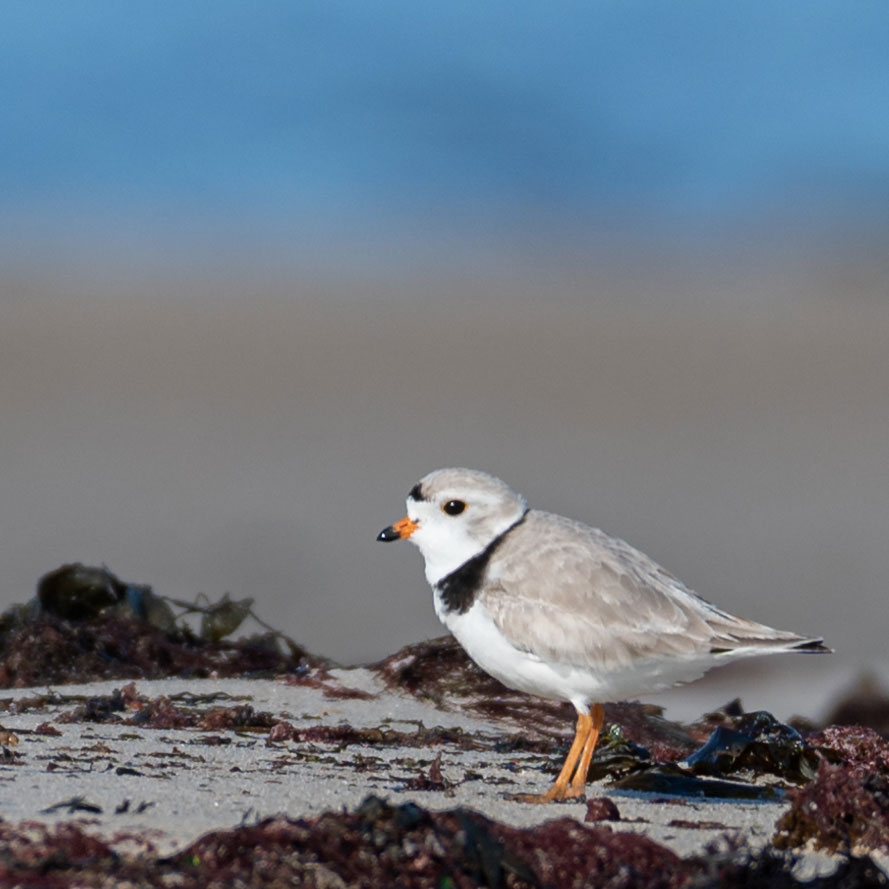By Anna White
Conservation Specialist
FI Conservancy
Our tiniest visitors are back after traveling a long way just to call our beaches home for the summer. The piping plovers have arrived, and we are already seeing successful hatchings, like this one where two proud parents are raising two chicks. Check out the video!

of the sign? (Click the image to enlarge)
Photo Credit: Anna White
With this year’s official plover surveys now underway, you may notice protective fencing and signs set up around some beach areas. These measures help create safe spaces where the plovers can nest, hatch, and raise their young during this important season.
- Piping plovers typically arrive by mid-March, and during May and June, they lay about one egg every other day until they complete their usual clutch of four eggs.
- If an early nest fails, they may make a second or even third nesting attempt, though those later clutches often have just three eggs.
- Piping plovers frequently share nesting beaches with colonies of least terns.
- Both parents take part in incubating the eggs, which usually begins once the final egg is laid. This incubation period lasts about 25 to 31 days.
- Once the chicks hatch, they leave the nest quickly and are surprisingly independent, fledging (or learning to fly) in about 28 to 35 days.

Did you know – many adult piping plovers return to the same nesting sites year after year and may even reunite with the same mate. Some individuals have been tracked for many years — one bird recaptured on Long Island was recorded to be 14 years old!
The fencing stays in place while the birds are actively nesting and raising their chicks, and it is removed once the season has safely wrapped up. While some older signs mention September or October, our team closely monitors the sites and ensures the fencing comes down when no longer needed!
We appreciate everyone’s understanding and support as we work to protect these special shorebirds. Together we can help make sure they continue to return to our beaches year after year.
Please reach out to the Fishers Island Conservancy if you have any questions, comments or concerns!
If you would like to learn more, check out these resources:
New York State DEC piping plover fact sheet
https://www.dec.ny.gov/animals/7086.html
US Fish and Wildlife Service piping plover conservation
https://www.fws.gov/species/piping-plover-charadrius-melodus
Piping Plover images by Todd McCormack
Piping Plover eggs image by Lily Starbuck






